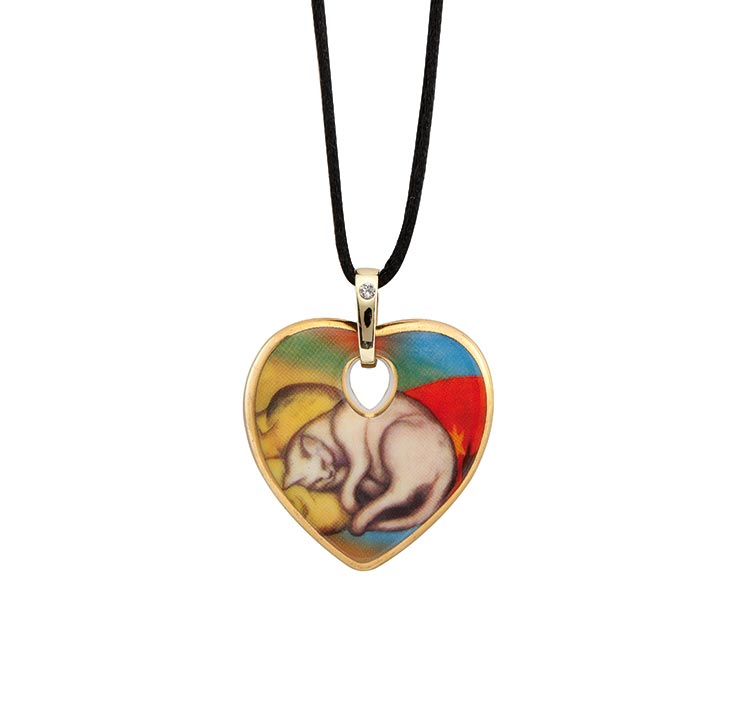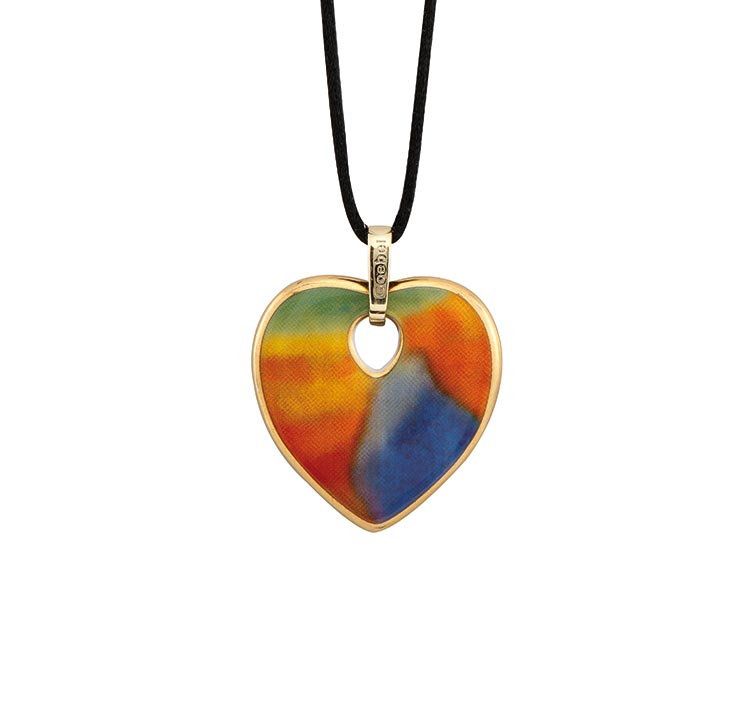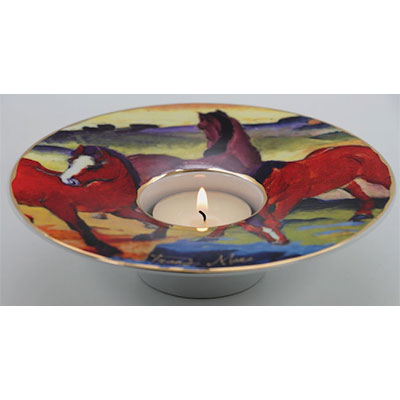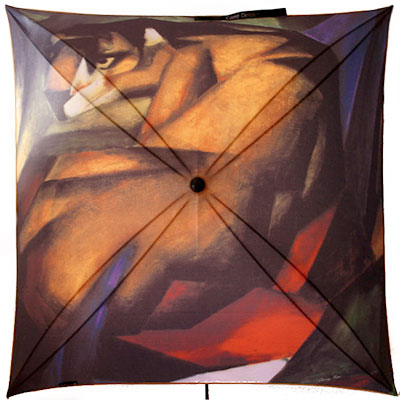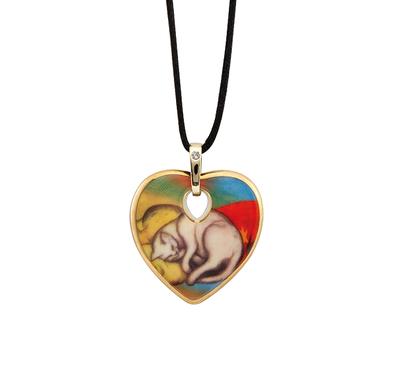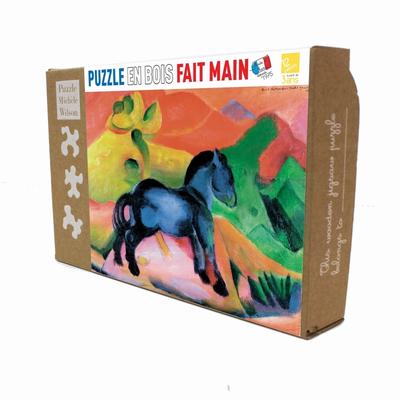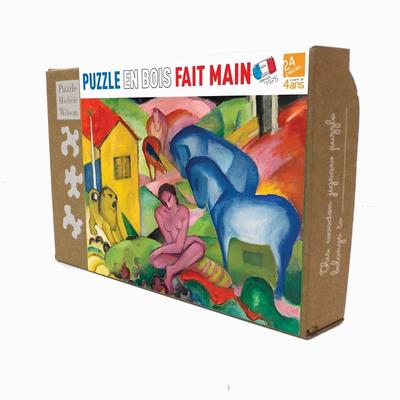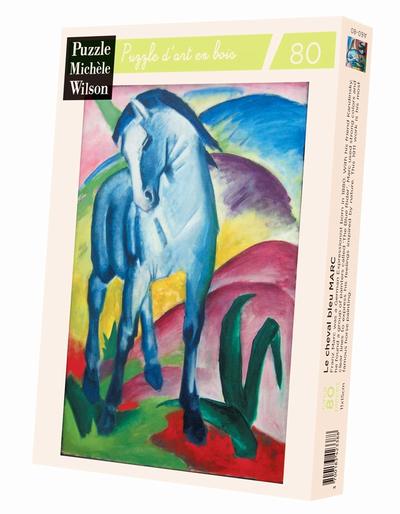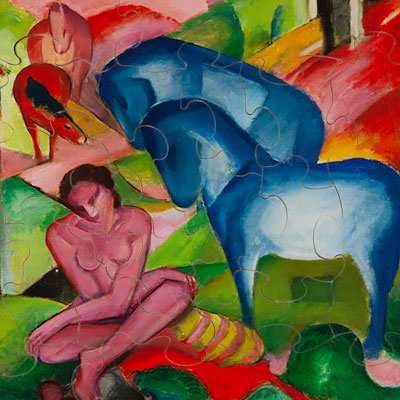Tel : (+33) 4 94 63 18 08
9am - 6pm from Monday to Sunday
All products Franz Marc • Products of the topic Animals
Franz Marc pendant : White cat sleeping
REF : BI-MARC-02
In stock
Only 1 in stock
Unavailable
59,00 €
Heart Porcelain pendant after Franz Marc : "White cat sleepinge".
Recto/Verso Heart pendant (see pictures)
Jewellery of hard porcelain, decorated with high quality ceramic art prints,
Real gold platings and Swarovski crystals.
L x l x H : 4 x 4 x 0.5 cm
Weight : 26 gr
Textile cord with fastening : 60 cm
The metal components are antiallergic and nickel-free gold coated
An artistic and cultural gift idea which will delight the lovers of the impressionist artist Vincent Van Gogh.
This jewel is delivered in its beautiful purse to the colors of Le Cadeau Artistique: grey satin, black velvet and golden logo.
Der blaue Reiter
Der blaue Reiter" (The Blue Rider) was founded in 1911 by Wassily Kandinsky and Franz Marc in Munich, Germany. The name of the movement comes from one of their paintings, "The Blue Rider", which represents freedom and spirituality. The artists of Der blaue Reiter focused on expressing inner feelings and spiritual ideas through art, envisioning an art that would know "neither people nor borders, but only humanity" (Kandinsky). In 1911, a first exhibition was organized, followed in 1912 by the creation of an almanac. Artists such as August Macke and Robert Delaunay joined this movement, which brought together artists from different countries, such as Russia, Germany, Austria and Switzerland, who shared similar ideas about art and life. The art of the Blaue Reiter is known for its bright colors and simplified forms. Paintings from this movement are often associated with themes such as nature, animals, and scenes from everyday life. Some examples include "The Large Blue Horses" (1911) and "The First Animals" (1913) by Franz Marc, "At the Garden Table" (1914) by August Macke, and "Landscape under the Rain" (1913) by Wassily Kandinsky. These works reflect the avant-garde vision and bold technique of these artists and are considered major witnesses of German Expressionist art. Unfortunately, the movement only lasted until 1914, with the outbreak of World War I. Kandinsky fled to Russia, while Marc and Macke both lost their lives on the battlefield. Nevertheless, the essence of the Blauer Reiter movement has survived through the Bauhaus, where Kandinsky taught from 1922.
Discover the artist
Marc Franz
Franz Marc was a German artist known for his paintings of scenes from nature and animal life. Born in 1880 in Munich, Germany, Marc grew up in a wealthy family and studied art at the Academy of Arts in Munich. He was influenced by the artistic movements of his time, particularly Expressionism and Fauvism, which emphasized emotion and bright colors. His works, which often included scenes from nature and animal life, were filled with vibrant colors and expressive forms. Marc was also active as an art theorist and wrote many articles on Expressionism and Fauvism. In 1911, he co-founded the artistic movement Der Blaue Reiter (The Blue Rider), which brought together many Expressionist and Fauvist artists of the time. Unfortunately, Marc did not have the opportunity to see the long-term impact of his work, as he died in combat during World War I in 1916 at the age of 36. However, his determination to express the essence of life and nature in his works has made him an important artist of Expressionism and Fauvism.
